Traveling on a Whim and Without Direction
We have no certain travel strategy for the next few days
other than a very rough plan that brings us to Trieste, Italy and our flight to London on August 18th. I realize that this puts some additional and undue stress on our relationship. As desirable as it may seem, it is hard traveling on a whim and without direction. You have to be entirely open and extremely flexible and compromising to make it work. Many times during a standard 1 or 2-week vacation, one always feels obligated to stretch and see everything that a vacation destination has to offer. We have said from the beginning of this year-long adventure that we would try not to feel obligated to see everything; rather try to live as the locals do, gaining a sense of day-to-day life where they live, where they shop, where they grab their coffee.
Opatija is a lovely town but over a morning cappuccino in one of the distinctly Italian cafés on the esplanade, we decide to accelerate our plans and head to our next un-booked stop on our tour of Istria, the small coastal town of Pula. Duscha from Stara Vila has recommended Pula to us not only for its interest and history but also because this is where she was born. We check out of the Hotel Dubrava and continue down the coast, heading inland and through the breadbasket of central and southern Istria. The drive takes us through sparse corn fields and gourd patches. We see locally produced olive oil and wine being sold in small batches, the rickety roadside stalls being manned by uninterested and mopey teenage boys. We don’t see mass acreages of grape-vine or olive tree and wonder how the locals survive on this arid and dusty landscape during this hot, dry summer.
Welcome to Pula!
Pula welcomes us in the early afternoon with an intensely blue sky. The sun beats down, the occasional billowing cloud blocking its strength. Pula is known as a unique, and very well-preserved Romanesque town, one of the only such towns in Croatia and its Centar is dominated by a well-preserved Roman Amphitheatre right on its harbour. Not only was Pula the 2nd most important olive oil and wine centre of the ancient Roman empire, but it was also the most important naval base of the Austro-Hungarian empire – what a history! Again, we go to the tourist bureau and are referred to a hotel very close to the Centar and quite cheap at 60 Euros. We drive several blocks and can park right in front of the Hotel Omir, our home for an undetermined amount of time. If I thought the Hotel Dubrava was a letdown, then the Omir is twice that, although a much cheaper letdown. And the room stinks, to boot (and like a boot).
Finding the Charms of Pula
We dump our bags and start to discover the town. On first viewing, the town seems dominated by an industrial harbour, but its real charms can be found in its winding and narrow streets. The central town square boasts an original temple to Augustus and has been in continuous use as the town’s main gathering place for over 2,000 years. There are several Roman sites a short walking distance, and we begin our tour with the biggest of them, the Roman Amphitheater, the 6th largest built-in the Roman Empire, and the best-preserved of any. Currently used predominately as a concert venue, the Amphitheater was host to many gladiator and wild animal games. We do a tour of the Centar, all the sites conveniently situated within a short walking distance of each other, and then proceed to the hotel for a nap and some respite from the sun.
Bloggers Life: Internet Connection!
On our way to our naps, we discover an internet café that will allow us to connect the laptop. Post-nap we take the computer and all of our homework to the café-cum-art gallery and stay until after eight o’clock updating, researching and doing email. We have decided that quaint and picturesque as Pula is, its sites and sounds have been fully experienced, and John does some research on our next location, Poreè and its hotel offerings.
We join the townspeople and the tourists on the main square and have the typical Croatian meal accompanied by some excellent busking entertainment by a fire-breathing juggler, performing just in front of the town hall. The young Italian couple eating next to us reminds of Italy: they start with pasta, then carne, with assorted vegetable dishes on the side, followed by some seafood, and then salad, wine, of course, a sweet, some fruit and then coffee. After seven months of travelling the world we are still surprisingly stuck in our North American ways: we have assorted salad (which in Croatia is shredded cabbage, some cucumber slices, tomato sections, and three pieces of lettuce) and tonight, lasagna. The young couple eyes us conspicuously: “Such cakes!”
Ahhhhh, the Italians.
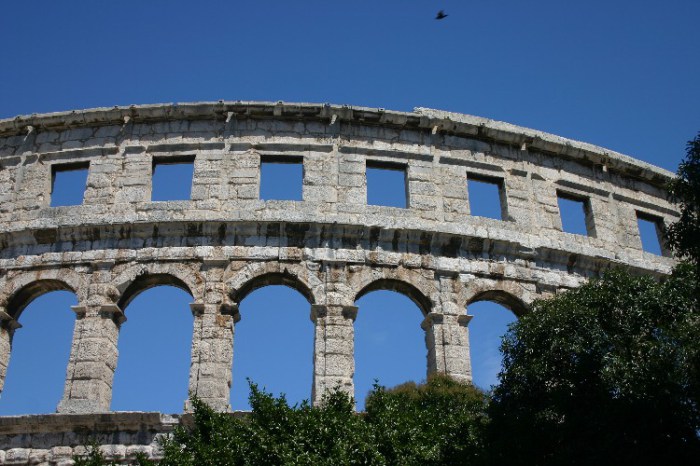
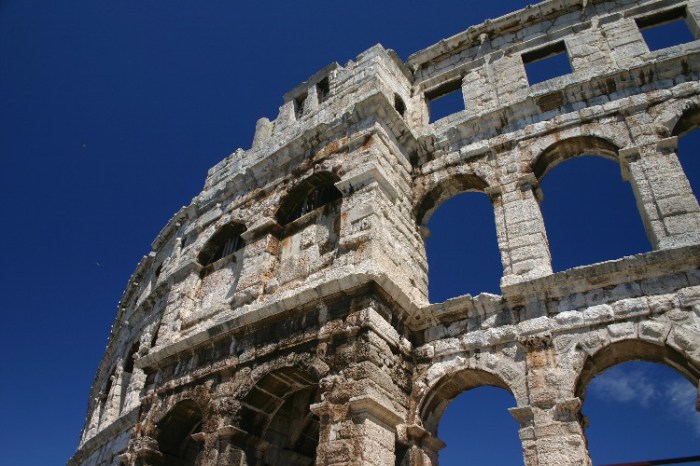
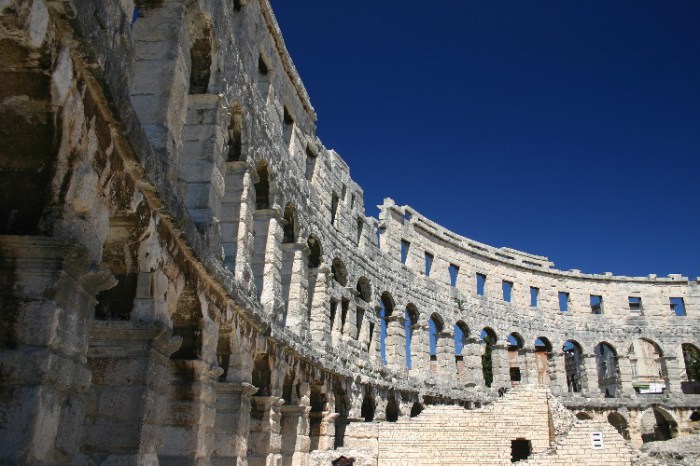
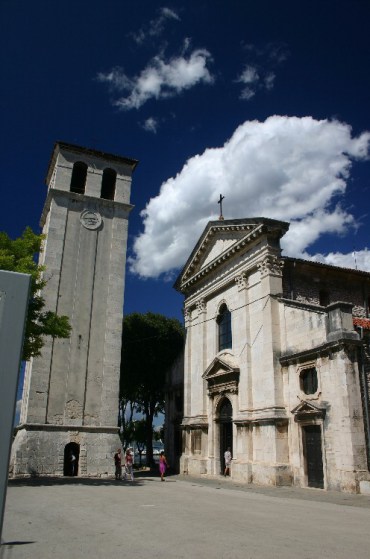
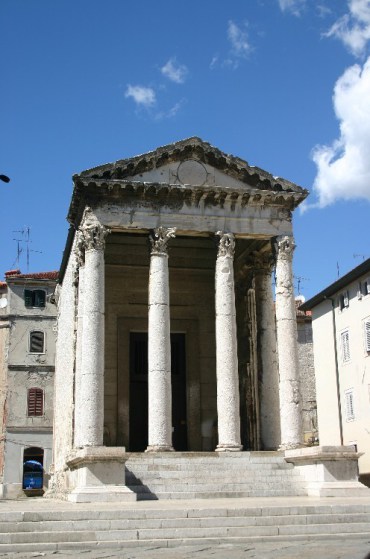
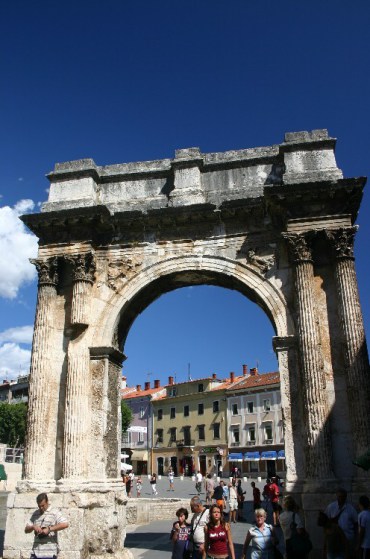
Comments